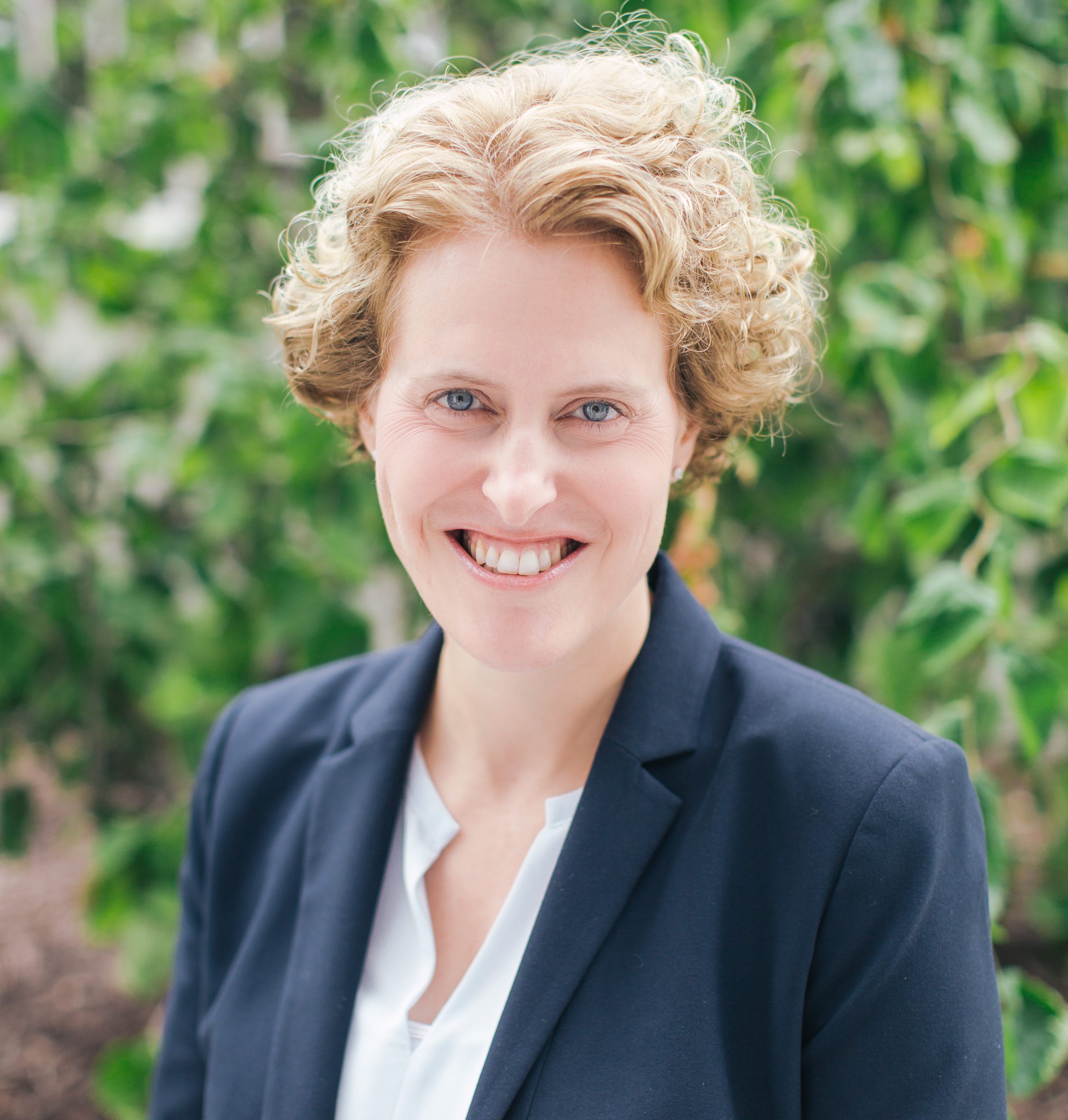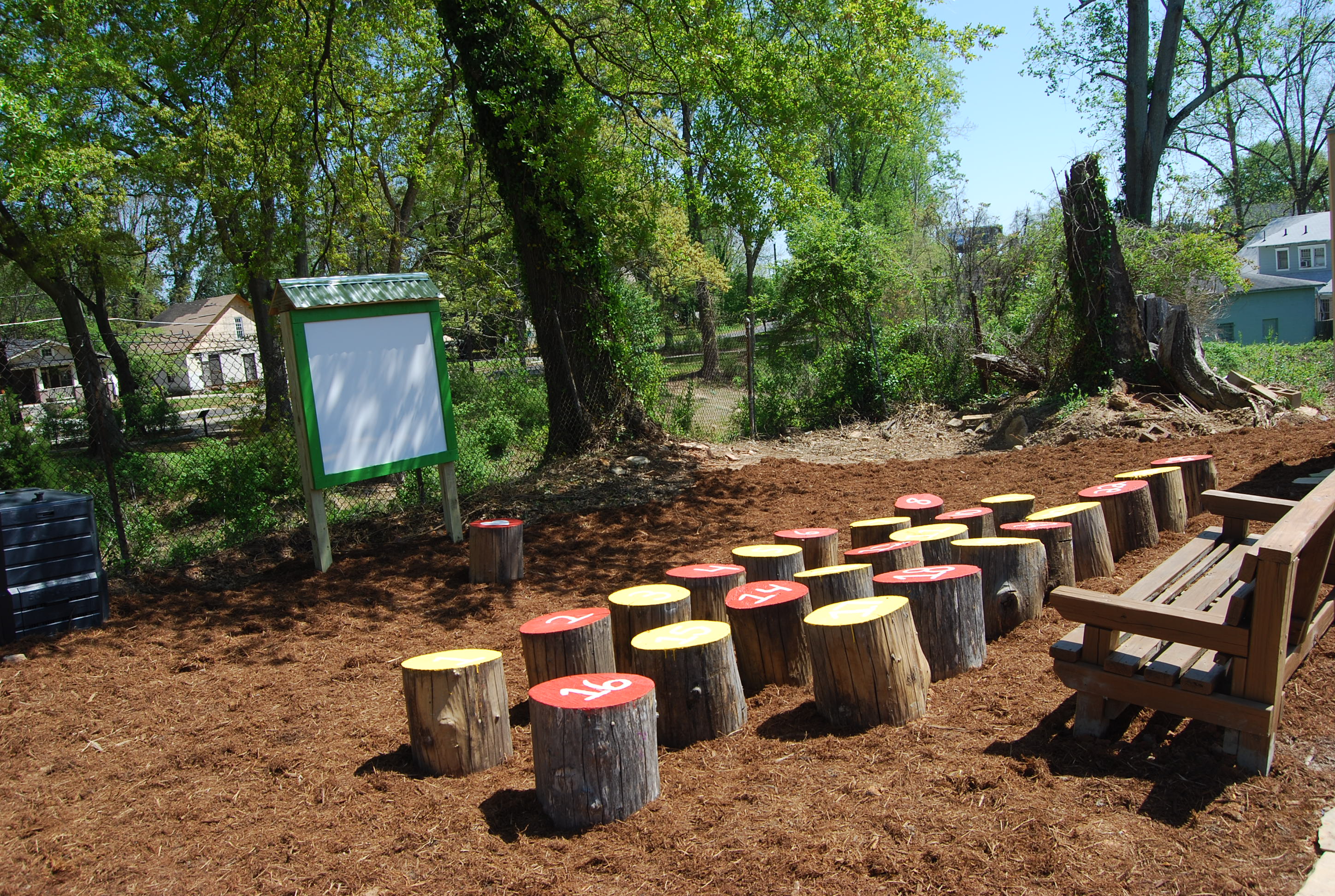
The American Academy of Pediatrics, as well as the school reopening plans for states such as Georgia and Florida, encourage school districts to construct outdoor classrooms to increase social distancing options on campus. National nonprofit Out Teach has 15+ years of experience in creating outdoor classrooms – and providing professional learning to empower teachers to use them to improve instruction. To provide schools and districts with additional insights and guidance on designing and creating outdoor learning spaces, the Out Teach Landscape Architecture team shared the most important outdoor classroom features schools and districts could quickly and inexpensively implement over the summer to support instruction in the fall.
The basic materials for an outdoor classroom listed below are often inexpensive, but construction and installation costs can quickly consume small project budgets. Some school administrators will need contractors to plan and execute these projects, while others can use the opportunity to build parent and community engagement by enlisting skilled volunteers to help. An organization like Out Teach can help schools and districts with design consultation services and construction. However, with the right planning and preparation, many of these projects can be completed with just a few people while easily following social distancing guidelines.
For a $5,000 per school budget, here are the top outdoor classroom features districts should prioritize.
1. Location, location, location
If schools can’t afford a Landscape Architect or landscape designer, it is important to ensure school administrators are intentional and thoughtful about their outdoor classroom design. Have school administrators identify a spot with natural shade, where they can position a seating area with a whiteboard in a way that students aren’t staring into the sun. Have them keep it near school doors to make it easy for teachers and students to get in and out quickly, with as little disruption as possible. Ensure outdoor spaces are accessible to all students, avoiding any areas that require students to go up or down stairs or steep slopes.
To both increase accessibility and prevent muddy shoes after rain, have school leaders look for locations connected to the school with paved or semi-permeable paths. Mulched paths can also be installed at fairly little expense if existing paths aren’t available. Avoid proximity to playgrounds or athletic fields, if possible, so students in class aren’t distracted by students at recess or PE. Easy access to hose bibs is also important if school leaders want to invest in gardens to enhance their outdoor learning environment.
Outdoor classroom ideas and inspiration (click arrows to view photos)
2. Whiteboards
Installing a whiteboard is critical to making an outdoor space useful and appealing to teachers. We’ve found that teachers are much more likely to use an outdoor space regularly if they don’t have to carry out their own whiteboard or chart paper. To easily source a whiteboard, contact a local sign company and order a heavy gauge aluminum sign with a dry erase coating. We recommend Image 360 because they’re nation-wide, fast, and high-quality. We typically install our whiteboards on free-standing posts, mounted in the ground. However, to save money on installation, the whiteboard can be attached to existing outdoor structures or exterior walls.
3. Seating
Seating is another critical need. In the current pandemic, we recommend individual seats, instead of benches. For one-off projects, DIY designers can contact local tree companies, who will often provide enough tree stumps for one class (typically 25-30). While not highly portable, stumps can be moved somewhat to accommodate social distancing guidelines. For districts looking to provide outdoor seating for several schools at once, small plastic stools, or 5 gallon plastic buckets (such as ones you find at Lowe’s or Uline), are readily available, sturdy, portable, and easy to store.
4. Shade
Existing tree cover is the best bet for shade and doesn’t add costs to your project. Many school buildings also cast shadows that can be used for shade during certain parts of the day. Some school leaders might be tempted to install inexpensive shade sails, but overhead structures, even fabric ones, often require permits and coding inspections. Fabric sails also deteriorate, require maintenance, and need to be removed before snowfall or severe weather. Districts with an eye on the future can plant fast-growing shade trees, such as River Birch, Japanese Zelkova, and Red Maple, which can produce ample shade after just a few years of growth.
For partner schools that lack shade, Out Teach constructs pavilions. However, these shade structures have higher costs and longer timelines due to engineering, permitting, and construction, making them impractical to schools working on their own with a small budget.
5. Storage
The last thing a teacher needs after taking a class outside is to have students asking to return inside for a new pencil, more paper, etc., Having an easily accessible storage option positioned somewhere near the whiteboard is key. Storage options could include sheds, lockers, or waterproof boxes. Ensure school storage units are well-stocked with whiteboard markers, cleaner, and wipes, as well as pencils, journals, outdoor learning supplies, and any learning supplies and garden tools that teachers might use. Ma ke sure the shed is locked with a combination lock and that all teachers know the combination. We avoid keyed locks, since keys often get misplaced. Simple Rubbermaid-style sheds are easy to assemble and work well if money is tight. As with shade structures, Out Teach also constructs larger permitted storage sheds for partner schools.
6. Raised Beds
Once the absolute essentials above are secured, the remainder of each school’s budget is best spent on raised beds, which teachers can use for countless engaging, hands-on lessons in almost every subject. Th ere’s a huge range in product quality for pre-fabricated raised beds, and in general you get what you pay for. Fo r custom wood beds, have schools use Douglas fir or cedar, and avoid pressure-treated lumber. We use cedar for our raised beds because they last 20-30 years and we put 2×8 boards along the tops so students can sit on the edges while they’re engaged in a hands-on lesson. If space allows, long and narrow beds are easier to weed. Be sure to also leave enough room between beds that mowers can easily pass in-between. Alternatively, you could remove the grass between the beds and lay down mulch.
Inexpensive add-ons
Rain barrels and compost bins
Items such as rain barrels and compost bins can serve as great hands-on learning tools for students, and many counties have programs that provide free or low-cost versions to schools and individuals. A quick online search will help you determine if your county or town offers these incentives.
Weather tools
Thermometers, rain gauges, wind vanes, and barometers can easily be installed on a free-standing wood post. In addition to enhancing weather/science lessons, simple weather stations provide incredible opportunities for students to deeply engage with math and data in a real-world way.
Protect the investment and produce long-term impact
As with any school district purchase, investments in outdoor classroom features can be wasted if teachers don’t receive professional learning opportunities on how to use this new tool to support academic instruction. With teaching routines so dramatically disrupted, teachers need support to adapt to new tools and environments. In addition to using money from infrastructure budgets, districts should invest a portion of their professional development budgets to empower teachers to use outdoor spaces to help shift daily practice and promote more active student-directed learning.
To help teachers use outdoor spaces for more engaging hands-on instruction outdoors, Out Teach offers schools and districts job-embedded coaching, professional development trainings, and professional learning communities. Districts and schools interested in improving instruction outdoors should contact [email protected]. Teachers interested in using outdoor spaces for effective cross-curricular instruction can go to bit.ly/OutTeachJoin to request access to a library of free standard-aligned lesson plans.
Jeanne McCarty is the CEO of Out Teach, a national education nonprofit working to ensure that all students, no matter their resources, have access to an engaging, hands-on education that transforms their lives. With thirty years of experience in the field of education, Jeanne serves as a thought leader in reimaging learning in schools to promote real-world, experiential learning that improves academic, social, and emotional development. She publishes articles on the topic for academic journals, speaks at conferences, and oversees the creation of extensive teacher support resources.









